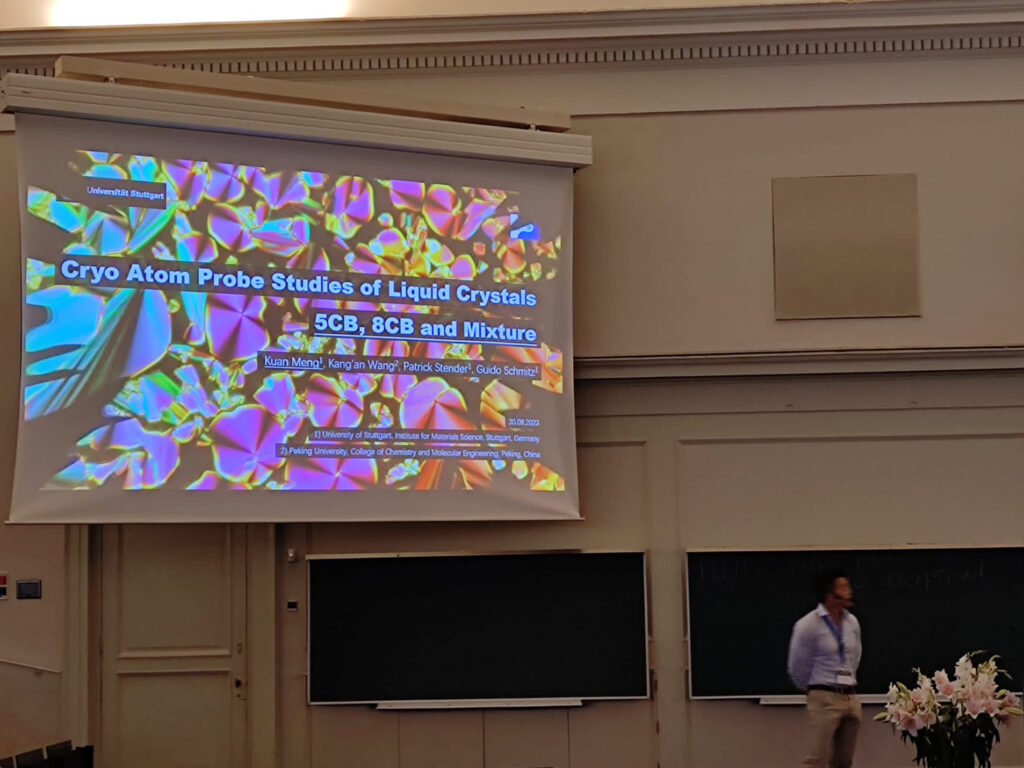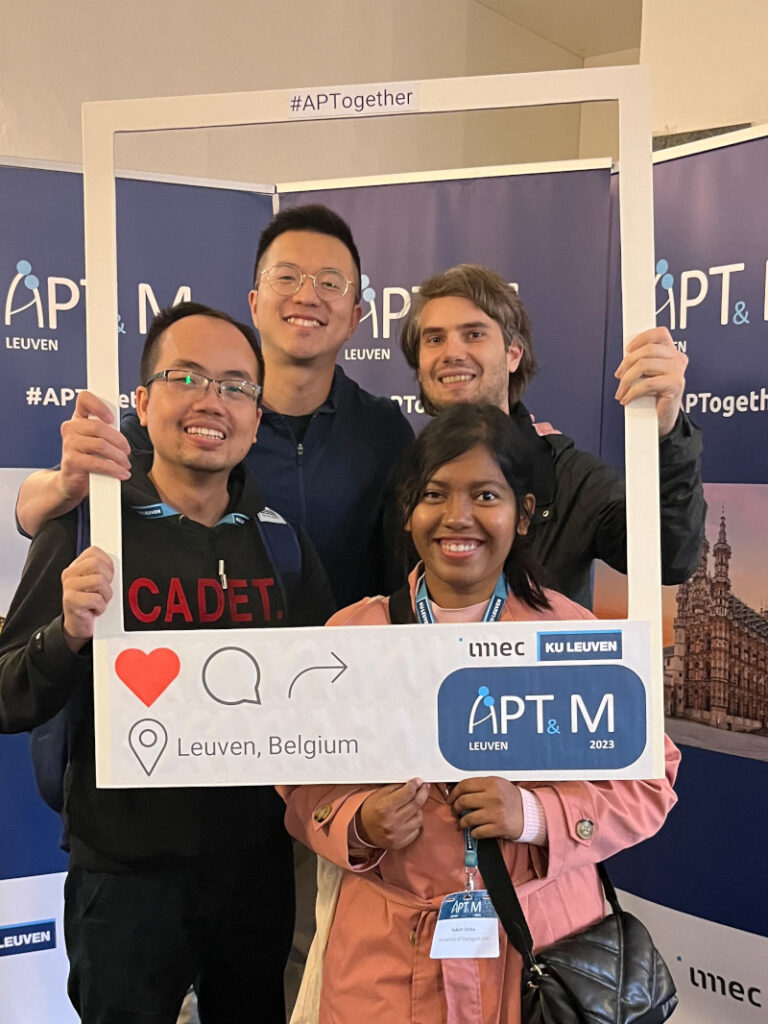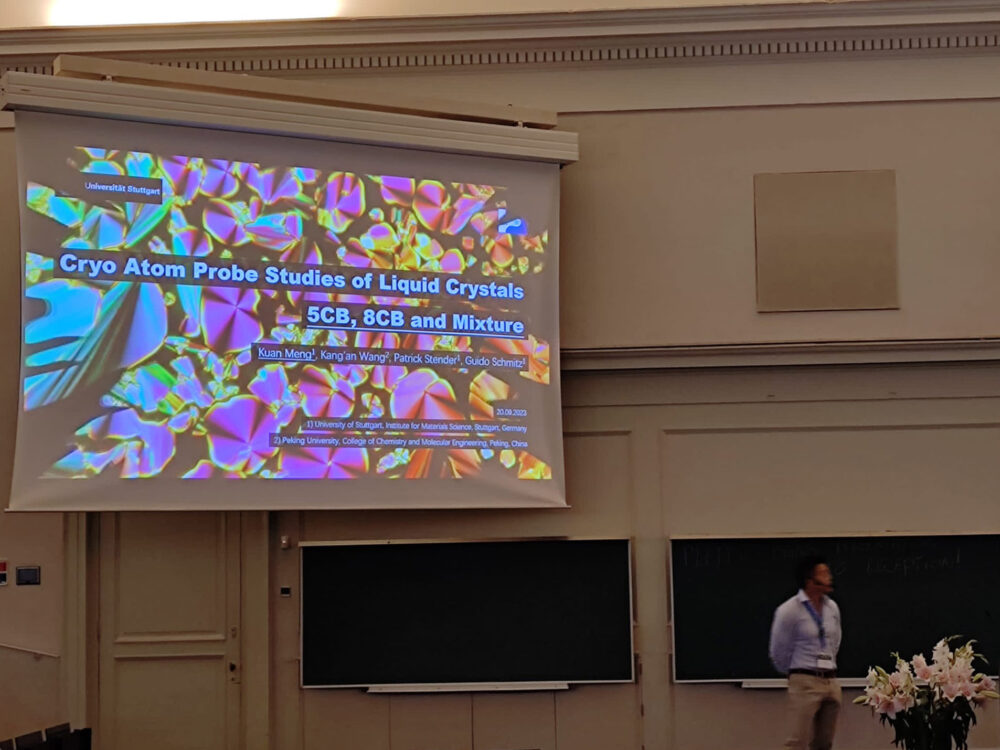On September 20, 2023, CRC1333 researcher Kuan Meng from project C03 gave a talk at this year’s APT& M Conference in Leuven, Belgium. The topic of his talk was “Cryo Atom Probe Tomography Studies of 5CB, 8CB Liquid Crystals”.

The APT&M conference, which took place from September 17-21, 2023 is a major international forum in the field of Atom Probe Tomography & Microscopy and its applications. Topics of interest include fundamental physics; laser-matter interactions; heat transfer and optical properties at the nanoscale; reconstruction methods; modelling and computational methods; nano-scale characterization of (functional) materials and nanostructures (metals, non-metals, semiconductors, ceramics, organics, biological, liquids); sample preparation, instrumentation and technique development; field ion microscopy (FIM); correlative andcombined techniques (TEM, SIMS, etc.); and more.
More information can be found here.

Talk Abstract
The development of Cryo-FIB enabled studies of various delicate samples of high interest, such as SEI [1], ferritin [2], porous borosilicate [3] or bio-molecules in aqueous solution [4]. Generally, organic materials exhibit complex mass spectra and a strong dependence on measurement conditions. Following our earlier measurements of frozen liquids, we are studying the evaporation and fragmentation of different liquid crystals. In detail, 5CB (4′-Pentyl-4-biphenylcarbonitrile) and 8CB (4-octyl-4-biphenylcarbonitrile) were chosen for investigation due to their relatively simple chemical structure and hydrophobically-induced stability.
The liquid crystal tip preparation was improved based on the previous water and n-alkane study. Firstly, the liquid was dipped onto a pre-made tungsten cryo post [5] before freezing. Adjacent, the “multi-window” shaping technique [6] was used to shrink the frozen bulk into a proper size before adopting annular milling. to obtain wrinkle- and protrusion-free frozen liquid tips with a measurable hemisphere.
Both types of molecules, pure 5CB and 8CB, evaporate predominatly as intact molecules from frozen state, which suits our previous observation in the n-tetradecane study [5]. As a consequence, these two types of molecules can be distinguished even in the mixture of both elements, due to their pronounced mass difference. The dependence of mass spectra on the evaporation conditions is discussed and the miscibility of both species is explored in 3D reconstructions, which should enable the measurment of liquid mixtures, if quench-freezing is rapid enough.
References:
[1] Se-Ho Kim, Kang Dong, Huan Zhao, Ayman A. El-Zoka, Xuyang Zhou, Eric V. Woods, Finn Giuliani, Ingo Manke, Dierk Raabe, and Baptiste Gault. (2022). Understanding the Degradation of a Model Si Anode in a Li-Ion Battery at the Atomic Scale. The Journal of Physical Chemistry Letters, 13(36), 8416–8421.
[2] Qiu, S., Garg, V., Zhang, S., Chen, Y., Li, J., Taylor, A., … Fu, J. (2020). Graphene encapsulation enabled high-throughput atom probe tomography of liquid specimens. Ultramicroscopy, 216, 113036.
[3] Perea, D.E., Schreiber, D.K., Ryan, J. et al. Tomographic mapping of the nanoscale water-filled pore structure in corroded borosilicate glass. npj Mater Degrad 4, 8 (2020).
[4] T. M. Schwarz, C. A. Dietrich, J. Ott, E. M. Weikum, R. Lawitzki, H. Solodenko, E. Hadjixenophontos, B. Gault, J. Kästner, G. Schmitz, P. Stender, 3D Sub-Nanometer Analysis of Glucose in an Aqueous Solution by Cryo-Atom Probe Tomography, Scientific reports 11 (2021) 11607. DOI: 10.1038/s41598-021-90862-8
[5] Schwarz, T.M., Weikum, E.M., Meng, K. et al. Field evaporation and atom probe tomography of pure water tips. Sci Rep 10, 20271 (2020).
[6] Meng, K., Schwarz, T., Weikum, E., Stender, P., & Schmitz, G. (2022). Frozen n-Tetradecane Investigated by Cryo-Atom Probe Tomography. Microscopy and Microanalysis, 28(4), 1289-1299.
